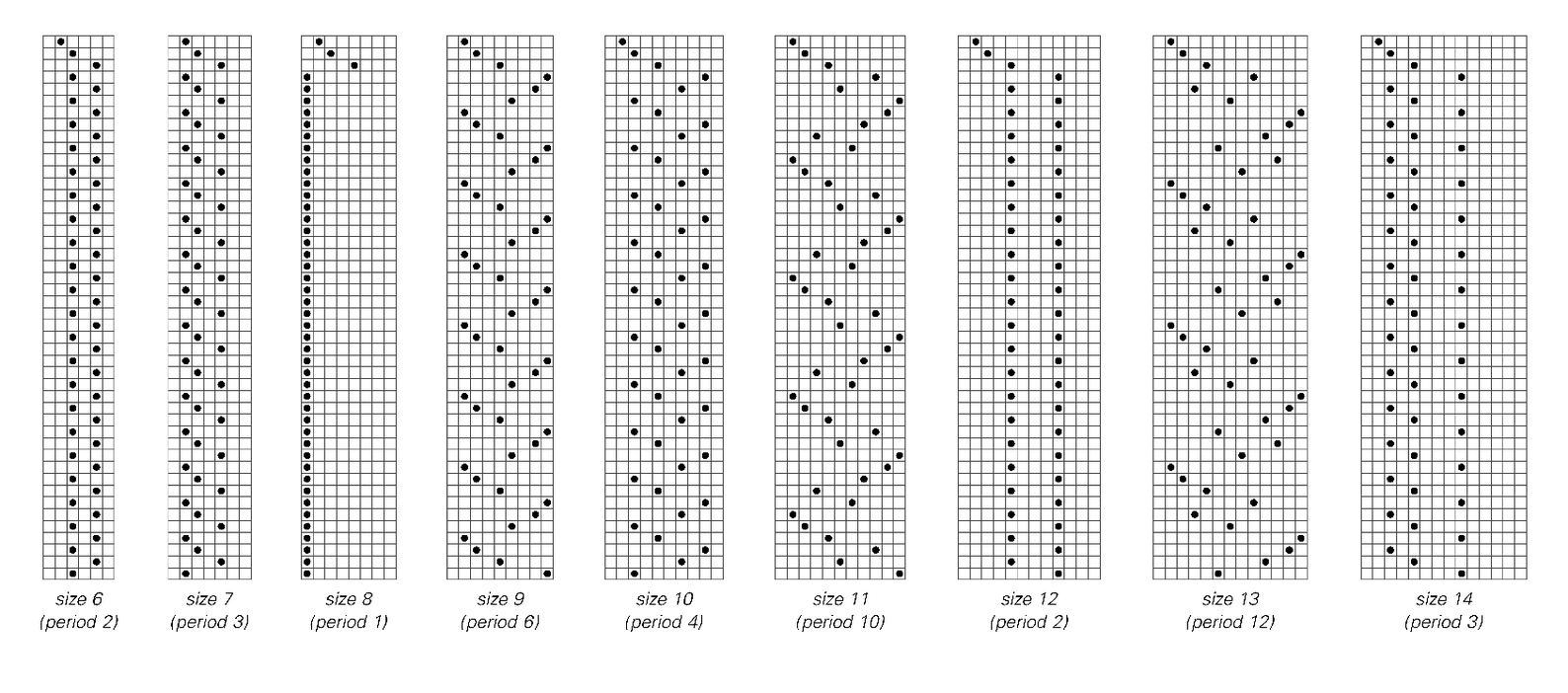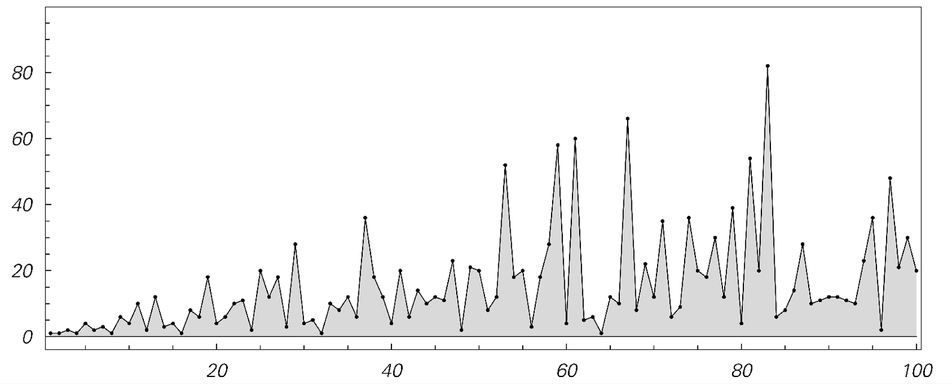Sometimes the actual repetition period is equal to this maximum value. But often it is smaller. And indeed it is a common feature of systems of limited size that the repetition period one sees can depend greatly on the exact size of the system and the exact rule that it follows.
In the type of system shown on the facing page, it turns out that the repetition period is maximal whenever the number of positions moved at each step shares no common factor with the total number of possible positions—and this is achieved for example whenever either of these quantities is a prime number.
The pictures below show another example of a system of limited size based on a simple rule. The particular rule is at each step to double the number that represents the position of the dot, wrapping around as soon as this goes past the right-hand end.


A system where the number that represents the position of the dot doubles at each step, wrapping around whenever it reaches the right-hand end. (After t steps the dot is thus at position Mod[2t, n] in a size n system.) The bottom plot gives the repetition period for this system as a function of its size; for odd n this period is equal to MultiplicativeOrder[2, n].



